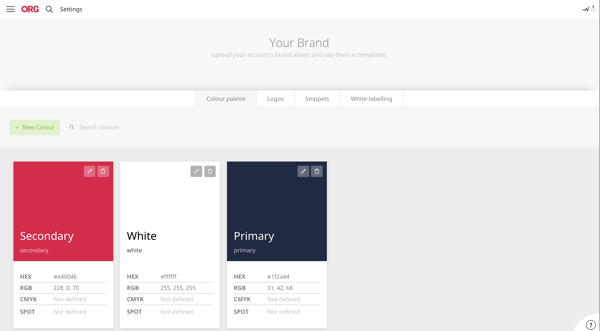As marketers, we inherently know there are multiple audiences for any marketing message. At a bare minimum, there are always internal and external audiences, and within these groups, multiple like minded or competing teams and voices can be heard.
One thing they all have in common right now is respect for an efficient response. In the days of Slack, Teams and other instant messaging tools, as well as too many social networks and media channels to count, marketing teams must be empowered to respond and execute rapidly, or they’re simply at risk of losing traction.
Globally, it’s never been more important to be responsive. According to Salesforce global chief marketing officer Stephanie Buscemi, “the old sales and marketing playbooks don’t apply”. Multi-year projects are out, while short-term stabilisation and growth opportunities are in.
“Everyone right now wants quick wins; there’s an impatience,” she said in a recent interview. “People aren’t making big bets. They're not really talking about their three-year roadmap right now. There’s a reset happening, which is 'What is my three-month roadmap?'”
The time available for marketing planning has concertinaed months into weeks and weeks into days. And the time for marketers to communicate this both internally and externally has similarly been condensed.
But it’s one thing to require a more rapid response from marketing teams. It’s another thing to give them the tools that empower them to achieve it.
“The things [customers] are doing are all about automation and digitisation,” Buscemi says. “So it’s all in service to their roadmap of where they are trying to get to.”
We’ve already said we think 2020 will be the year automation is applied broadly in marketing. This is because automating repetitive, predictable or time-consuming tasks provides an answer to so many of the budgetary, brand and staffing problems so many marketers are facing. Almost one in two (44%) marketing leaders believe automation will become more important as a skill in 2020.
Whether it be lead management and nurture, brand and production automation, social media posting or other areas, there are big gains to be made by implementing automation technology in most marketing organisations.
But where will these gains be felt? Here are five places you can earn some love with the intelligent introduction of automation into your marketing processes:
- Customers and prospects
Is there anything customers like better than a quick response? Arguably, it’s actually better than the ‘right’ response, because even before you know the final outcome of your request or query, you’ve already received a tangible sign that the company you’re approaching cares about its customers.
On the flip side, if you’ve called in to a customer helpline and you’ve been on hold for an hour only to be told you’re still 8th in the queue, you might be forgiven for forming the opposite view.
There’s lots of research to support the positive impact a speedy response will have on a customer or prospect’s relationship with your brand.
Sending automated emails in response to customer actions as part of a marketing automation play can boost qualified leads four-fold. Meanwhile, Nucleus Research found implementing marketing automation improves business productivity by 20%, as well as shortening sales cycles and boosting revenues.
We know speed is essential when it comes to lead management; according to research published in Harvard Business Review, companies that try to contact potential customers within an hour of receiving a query are nearly seven times as likely to qualify the lead as those that take just an hour longer.
Chatbots offering automated conversational marketing responses are one way marketing teams can help automate these responses, providing a rapid response while routing any queries that require a human response to the correct person - which might be as simple as sending it to someone in a timezone that’s online at the time.

More than four in five (82%) consumers rate an “immediate” - 10 minutes or less - response from a company as very important when they have a question, according to Hubspot. This can’t be achieved consistently without automation.
“Today, your biggest risk of disruption isn’t your competitor’s products or services. It’s their go-to-market,” Hubspot argues. “The company with the simpler, more relevant, baggage-free process will always come out on top.”
- Marketing requestors
An often overlooked but critical audience of marketing is made up of the internal stakeholders that need marketing materials from the central marketing team.
These could be the product team, the sales team, the events team, retail store operators, franchisees, university faculties or colleges, agent networks, and so on.
Generally - and no matter how connected or agile your marketing team is - their requests go into a queue or on a backlog, awaiting the time when they can be actioned. Except when they shoot to the front of the queue due to some rapid prioritisation by the company executive or the CMO.
At least half the time, the first thing marketing will actually do is send back an email that goes something like this (in nicer words): “I need a brief. This email you sent is not a brief. It doesn’t explain what you need, why you need it or what you’re trying to achieve. Go away, have a think about it, and come back to me when you’ve answered at least those three questions.”
Even when design and production are handled in-house, your stakeholders typically wait weeks for the marketing materials they need.
Enterprising (if misguided) individuals will often take matters into their own hands by that time, creating somewhat distorted assets of their own that either merely nod to - or completely bypass - your existing brand guidelines.
The best way to speed up this process - and avoid diluting your brand experience - is with a brand automation platform that puts asset creation into the hands of your marketing requestors - within defined limits.
Brand automation platforms involve the use of responsive templates that enshrine your brand guidelines, colours, fonts, themes, images and layouts for all of your approved formats - dramatically reducing both lead times for internal stakeholders and production times and backlogs for marketing teams.
This can result in a 60%-80% reduction in marketing requests, and the creation of approved marketing assets within minutes instead of weeks.
Here’s how one of our customers expressed the love marketing received from requestors as a result of making the production process quicker and easier: “The sentiment within the network for local marketing is so much more positive now. The ease of use and immediacy of creating their own artwork for our franchisees is very powerful.”
- Marketing colleagues
With the automation of email, conversational queries and marketing production, your marketing colleagues - whether that be designers, digital marketers, marketing ops or managers - will breathe a collective sigh of relief.
Not because automation is synonymous with “set and forget”. Actually, it pays to regularly check, fine-tune and ensure your automations are running as planned.
But because they will now be free to concentrate not on those urgent requests that can take up the bulk of their time, but on the work they were actually hired to do.
Ad hoc requests and other time-wasters take up an average of two-thirds (64%) of the time of the average marketer - leaving them with just one-third of the day in which to do the job they were hired to do.
Imagine if you could reduce that time spent reacting to ad hoc requests to just 25% of the average marketer’s working day using automation? Other added benefits include less personal time spent catching up on strategic marketing work, and more time dedicated to strategic, marketing work. Who wouldn’t love you for it?
- The public
With the proliferation of social channels, an element of the brand experience for any company is now in the hands of the public. That might include your customers; interested observers on social channels; organised interest groups or others.
When a company is tagged or mentioned on social media, the public at large expects a rapid reaction - within hours rather than days. For crisis communications, that timeframe can shorten to as little as 30 minutes.
If the public doesn’t hear from you, you can expect to hear more from them - on whichever channel they choose to use.
Your social, communications or marketing team might be able to cobble together a quick tweet, but how long will it take to roll that out on Instagram, Facebook, Snapchat, Pinterest, LinkedIn or your own website, to name just a few? And what processes do you have in place for supporting that activity? The creation of social tiles and posts that take your message and put it on all your channels is a prime opportunity to use automation to save you time and angst.
.png?width=2850&name=Group%20239%20(1).png)
Respond quickly and appropriately on public issues - whether it’s a health or regulatory concern, a product recall, a social movement or something else - and you’ll often win respect.
Some arguments aren’t worth getting drawn into. But in other cases - such as if someone calls out a genuine mistake, a product failing or raises an issue that’s important to a lot of people - the right response will even convert critics into fans.
Unhappy customers may bad-mouth your brand to five others; if you can win them over, they’ll say nice things about you to twice that many.
- Other internal stakeholders (and the boss)
For better or worse, marketing touches most other teams within a company, from accounts to legal to sales, and so on. And then there’s the executive team - the CEO, CFO or even the board.
Often these players want the same information from marketing, over and over again - updated for the current reporting period.
How much have you spent? How many leads were generated? How many sales were made? What’s the ROI?
Some teams - such as legal - just want to be able to approve word changes or update disclaimers.
Others want access to customer data to spit out the right information as part of a personalised account management plan.
In these circumstances, the right automations - whether that be automated compliance and approval workflows, integrations between your CRM and brand automation platform, or automated data visualisation based on known data points - will save marketing a lot of time and heartache - as well as giving your colleagues the information they need whenever they need it. Who wouldn’t love that?
A good marketing team knows internal audiences are just as important for marketing as those external to the company. The judicious use of automation and related technologies has never been more important for speeding up response times, earning some brand love and winning over colleagues, enabling marketing to be the brand hero.